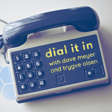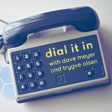
S3 Ep32: PR Strategies for B2B Success with Rob Felber
In this episode of Dial It In, Trygve starts on a somber note, mentioning Nicole's sudden hospitalization and reminding the audience about the importance of taking care of oneself. The episode features a discussion with Rob Felber, President of Felber PR and Marketing, who specializes in helping B2B manufacturers with their public relations and marketing strategies. Rob and the host discuss the nuances of PR, marketing, and advertising, specifically for industrial manufacturers. Rob emphasizes the significance of long-term consistency in PR efforts, the importance of building relationships with media, and the strategic approach needed for successful trade shows. They also cover the common mistakes companies make in managing PR and marketing, and how to effectively measure PR success in the digital age. Additionally, they address the outdated notion that print media is dead, explaining its relevance and integration with digital strategies. The episode stresses that PR is vital for building industry credibility and generating leads, and that substantial planning and consistency are essential for successful PR campaigns.
Connect with Rob
LinkedIn
Felberpr.com
…
Dial It In Podcast is where we gather our favorite people together to share their advice on how to drive revenue, through storytelling and without the boring sales jargon. Our primary focus is marketing and sales for manufacturing and B2B service businesses, but we’ll cover topics across the entire spectrum of business. This isn’t a deep, naval-gazing show… we like to have lively chats that are fun, and full of useful insights. Brought to you by BizzyWeb.
Links:
Website: dialitinpodcast.com
BizzyWeb site: bizzyweb.com
Connect with Dave Meyer
Connect with Trygve Olsen

